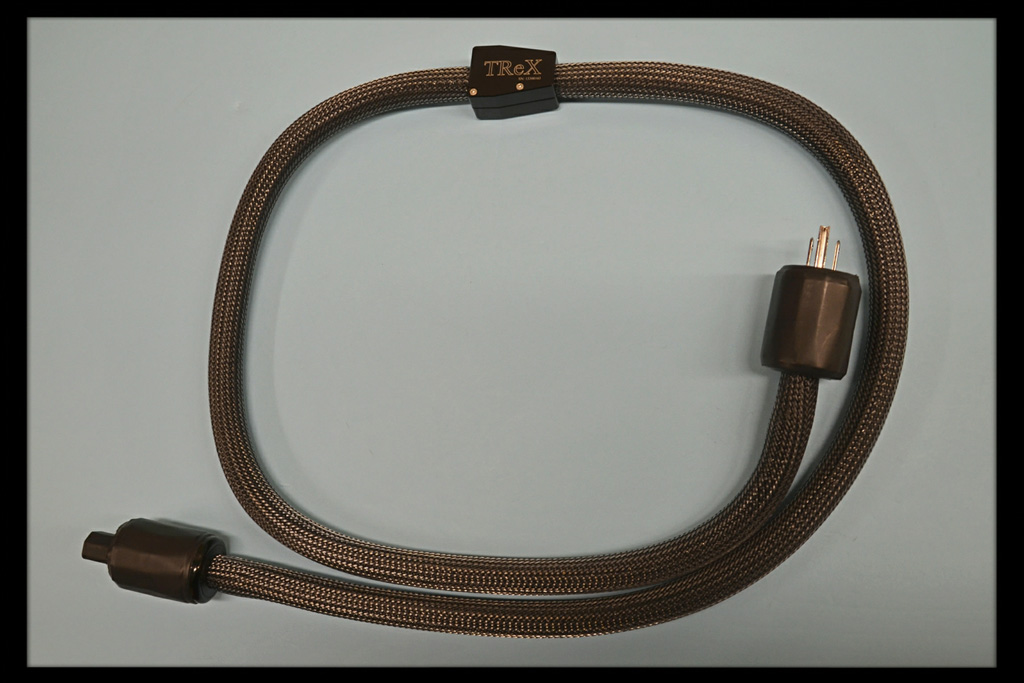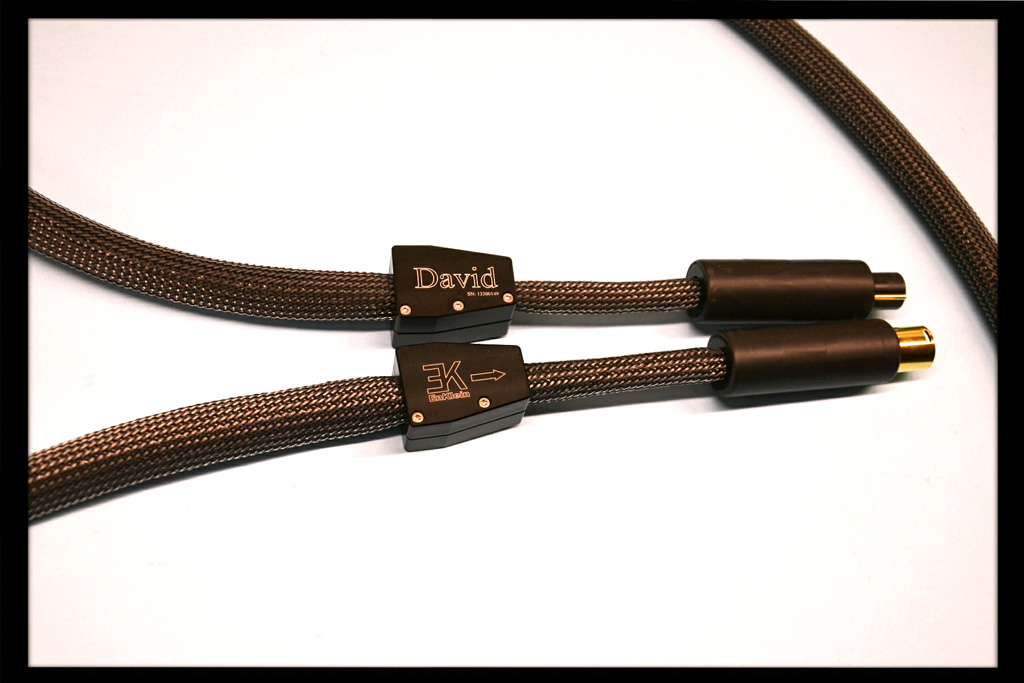T-Rex
You can read the full run down of how things went down with the insertion and break-in of the Enklein T-Rex and the Triangle Art RA-6 power conditioner in the latter’s published review. Despite the fact that the folks from EnKlein advised me that the T-Rex was an evolved or upgraded Taurus Reference, my experience with the cords I had on hand initially proved to be much more than that sonically. That might actually speak more to having a greater number of gremlins lurking in my own sound room and power supplied to my house than I had thought previously.
Shortly after writing my thoughts on the Triangle Art RA-6, EnKlein recalled the David and T-Rex’s. In the case of the T-Rex’s, my own EnKlein Taurus Reference cords went back to their maker and returned a couple of weeks later fully upgraded to T-Rex’s. I was then able to get back to some serious listening and unraveling of mysteries. In my first round of listening session, I returned to my core system:
Pass Labs XP-20 Line Stage
Pass Labs X350.5 Power Amplifier
Zesto Audio Andros PS-1 Phono
Merrill-Williams R.E.A.L. 101/ EPA-500M tonearm / ZYX Yatra cartridge
Conrad Johnson/McCormack UDP-1 Deluxe
Eficion F300 full range AMT speakers
EnKlein Zephyr interconnects throughout
EnKlein T-Rex power cords throughout
Starting off with some of my regular go-to CD’s and LP’s, it took no time at all to confirm my earlier inclinations regarding the T-Rex. There was not an area in the sonic spectrum that was left unchanged. The already black backgrounds seemed even quieter, subtleties in bass lines in particular that were previously masked seemed to emerge , and the slight glare that always seemed present with the Taurus Reference had absolutely vanished. Another particularly interesting effect was that of a wider soundstage. In fact the effect was more akin to an improvement in channel separation. Indeed, the T-Rex had achieved no small improvement over the Taurus Reference. In my system, it bested my reference in every sonic parameter. I had initially been hopeful that the T-Rex would provide some of the quieting and imaging of my other go-to cord the Aural Symphonics MagicGem v2t. Instead, the T-Rex leapfrogged the accomplishments of both the Aural Symphonics cable and EnKlein’s own Taurus Reference and has attained an entire new level of performance I had yet to hear with respect to power cords. This was indeed a real treat! Of particular note is the greater sense of transparency and 3-dimensionality from the midrange on up. Also, the bass seems to be more in tune with the rest of the spectrum and simply contributes to a very taught and effortless top to bottom consistency.
These results really had me pumped as I continued the review process.
David
The David interconnect’s appearance in my sound room was indeed a bit short-lived, but made an indelible impression. Having been assured that they had already been run in for a sufficient amount of time, I still took advantage of the fact that I had a full second system for a time and put roughly 100 or so hours on them while I evaluated the above mentioned system.
Once I felt that I had sufficient grasp of the change from Taurus Reference to T-Rex power cords, I decided that it was time to substitute in the David interconnects and remove the excellent EnKlein Zephyrs. The results were nothing short of jaw-dropping. In fact, I made it a point of verifying all connections, changes, channel correctness, phase, you name it. To sum things up at this stage of the evaluation, what I can relay is that the David interconnects achieved a level of imaging, and had woven a highly precise sonic fabric that left me at times breathless. I have to admit, I’m an imaging junkie. To me, very little is more satisfying than hearing a well-recorded live performance and having a system capture the event in a way that teleportation to the performance is achieved. This was barely my first Sunday listening session with the David and I knew that time was indeed running short. These puppies were destined for CES and I was almost in full panic mode.
Over the following few weeks through the Christmas and New Year season, I managed to get enough listening sessions in to be able to somehow quantify the differences I had heard through merely inserting the EnKlein David interconnects to the reference system. Now, I’m certain that some of these observations are system-dependent as well as environment-dependent since they likely relate to the David’s isolation prowess but one of the major accomplishments I found was not just simply how “quiet” the soundstage was, there was more, much more. The recorded performances came alive with a density in sounds and sense of realism that wasn’t previously present. The changes were also spatial and in phase coherency. While the David proved to be superbly refined and detailed, it was the vanishingly low noise floor and from lack of a better descriptor, timing, of the cable that to me made things so astonishingly lifelike and real. There are interconnects I have tried that in very small doses gave glimpses of this kind of spatial integrity and performance. However, the David is the first interconnect to my ears that actually consistently appeared to deliver these qualities in spades. Inshort, the EnKlein David served up a quiet, highly detailed, tonally neutral-yet-rich believable broad ranging soundfield with seemingly no major compromise. Quite frankly, to me, this was uncharted territory.
These results were consistent throughout my listening sessions. On some recordings, especially those with a lot of processing, the apparent improvements were not as profound, however, session after session, irrespective of LP or CD, the system came across with a sense of uniformity, expression, and immersive qualities that just simply begged you to relax, tap your foot, bob your head, or (yikes) even sing along. By this time I had made peace with what seemed to me like improbable results born simply by the exchange of a set of cables.
Realizing this and being anxious to move on and insert the big Melody Audio MN845 monoblocks I had in for evaluation, I finalized my notes and comfort level with the sound of the Davids on the all-Pass Labs reference system and in the final couple of listening sessions with the David, I decided to swap the system electronics. This move led to what has proved to be both a revelation and at the same time what many professional high-volume reviewers may deem a rookie mistake. It is for that reason that I conclude the evaluations of the enKlein David interconnects and T-Rex power cords right here. You will be able to read the about the mating of David and T-Rex to the Melody Audio MN645 mono block amplifiers in a future article.
- ← Previous page
- (Page 2 of 3)
- Next page →


